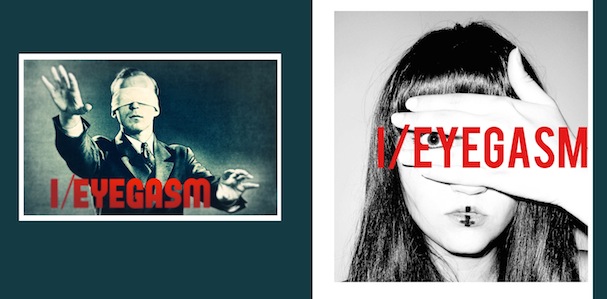 |
|
Your imagination challenge numero uno will be cleverly titled, double-spaced, have 1-inch margins top and sides and be carefully proofread; additionally, it will be full of active verbs and, in general, have syntactic variety so as to avoid the dangers of the "IS" VIRUS (use the sample grading sheet opposite as a checklist of what NOT to do. Lastly, please use MLA or University of Chicago-style works cited pages. Your eyegasmic expository bundles of genius are due IN-CLASS, Thursday March 26, 2014--you will walk into class on time and drop your paper into the decorated receptacle that corresponds to your specific section (there will be one other bag with my name on it as well for those who want to brave the challenge of my grading!). Late papers will not be accepted. Early papers, in most cases, will be cherished lovingly. All "A-grade" level imagination prompt responses will integrate select, direct quotations from the primary texts read thus far in the class this semester and will avoid ALL of the quicksand-like bad habits noted here on the gradesheet above--click it to make it readable. Additionally, A-level grades will be awarded ONLY to crafty undergraduates who make use of scholarly research discovered either by prowling the stacks (the shelves and shelves of books that fill Love Library, aka the "Library of Love") or that you can gather off of JSTOR or PROJECT MUSE--be sure to CITE THESE WORKS CAREFULLY. In general, avoid research garnered from the internet--any use or adaptation of material from Spark Notes, Cliffs Notes, Barron's Notes, etc (and especially essays that rely on Wikipedia) will likely be returned to you ungraded. One last bit
of advice, do NOT plagiarize ANY material from an online source or
'paper mill'--unCITED material = PLAGIARISM; also, as noted above, if
you are going to analyze a key element
from an illustrated or filmed work, do please go to the bother of
xeroxing the image and incorporating
it INTO your essay with captions and with a notation in the 'Works
Cited' to let your readers know where you got it from. Last hint? Have a blast with this paper! Try things you have NEVER tried before! Test the limits of your imagination! Good luck! This IMAGINATION CHALLENGE is slightly different from other writing assignments you may have completed as an undergraduate (for example, please leave everything you learned to loathe in RWS 100 or 200 at the door--unless your instructor was a genius, in which case, use your best judgement). For this Imagination Challenge Numero Uno (Number One), you will fill in the blanks provided below and then complete the essay making sure to provide specific textual evidence to sustain/defend/illustrate your stated position in the essay! FINISH only ONE of the following challenges. Note that some of the blanks below are meant to be filled with authors' names whilst others should be filled with specific phrases/ideas; read the prompts carefully to make your final determination. One last thing. Try to finish your paper a DAY BEFORE it is due. Print it out and lay it on a desk in your room. A day later, wake up early and take this printed work and go to a room/library/cafe you don't usually go to--go there with a big old printed dictionary, you should own one and you can get good ones for cheap at old book stores like Maxwell's House of Books, Adams Avenue Books, DG Wills Books, Bluestocking Books and other area book shops. Take your paper to this special place and edit your paper. We really don't have the power to carefully edit a document on the screen where it was composed. You must switch media, going from screen to paper, from photons to ink, to see errors your reader will trip over! Cool. Go for it! Here are your prompts! Unless you KNOW you can write a better introductory paragraph, please use these PromptParagraphs™ (an intellectually enhanced version of MadLibs!) as your opening paragraph for your paper. 1. Zarate and Appignanesi Go For a Walk With Dostoevsky Oscar Zarate's mesmerizing graphic work splashes across the pages of Freud For Beginners written
by Richard Appignanesi. This dynamic duo's interpretation of Sigmund
Freud's life's work is both provocative and clever--one of the best
things about it being that the book reveals connections between
psychoanalysis and the arts. In particular, Zarate's and Mairowitz's
analysis of Freud's wide-ranging ideas seems perfectly suited to a
diagnosis of the main, unnamed character of Fyodor Mikhailovich
Dostoyevsky's Notes From Underground.
In the
pages that follow, I will attempt to forge a link between Freud's
theories and Dostoyevsky's bizarre narrator with particular focus on
____________________________. By doing so, I hope to illustrate how _____________________... 2. Psychology
& Sexuality (note that doing this challenge means also doing some
cool secondary research human psychology/sexuality)... A provocative psychological film by writer and director Spike Jonze, Her challenges its readers to explore the
______________________ of human sexuality--to be more specific, Jonze take viewers on a tour of ___________________
introducing
characters that ______________________. Recently, specific
critics have focused on eroticism and sexuality in American
cinema--typical among these is _________________________________________________ written by
_____________________. I am not totally content, however, with Professor
_________________'s study of the psychology of sexuality in American
cinema. In the paragraphs that
follow, I will briefly illustrate my problems with his/her work and
suggest better ways to explore Jonze's project. 3. Dion Boucicault and John Berger Enter the Optical/Political Panopticon Dion Boucicault's The Octoroonintroduces us to a world where African Americans and Native Americans live as second class citizens (worse yet, in some cases, they are treated worse than animals). Bound up with this institutionalized devaluing of specific human "types" is an aesthetic determination; here, the color of one's skin or one's accented language gets assigned a negative value, a place of dishonor, on the hierarchy of "objective" human value. In the subsequent paragraphs of my essay, I will use John Berger et al's critique of the visual in Ways of Seeing to explore Boucicault's parallel critique of racism in The Octoroon. Ultimately, I hope to show that Berger's ideas about seeing and Boucicault's ideas about race are ____________________________... 4. Technologies of Race The Octoroon, by Dion Boucicault, and Sleep Dealer, by Alex Riverareveal an Irish writer and a Latino director obsessed with the nexus (the matrix) of love, race, and technology, and more. This essay seeks to probe further into this curious mesh of ideas (both aesthetic and political) that fuse Boucicault's and Rivera's interests as storytellers. In particular, I will argue that _________________________... 5. Comparative Literature: Kafka and Dostoyevsky The
best literature is merely a vehicle for surveilling the dark corridors of the
human mind. In Gregor Samsa and the nameless narrator from Notes From Underground , writers Franz Kafka
and Fyodor Dostoyevsky introduce readers to men who are trapped, men who
endure, but also to men who are, in a sense, failures. Or are they? I
will use the next few pages to creep carefully into the minds of these
two memorable characters from literature in order to explore how ___________ 6. Dueling Visions of an Altogether Imperfect Future. The conclusion of this essay appears here in the introduction: Spike Jonze's Her and Alex Rivera's Sleep Dealer have nothing to do with each other. I know what you are thinking: "How can that be?" or "This writer is crazy." After all, both cinematic masterpieces introduce us to future worlds where technology directly impacts upon the human animal. But I intend to argue something opposite. That when you look closer, Jonze and Rivera actually emerge as adversaries, as antagonists, and that their "acts" of cinema unfold at a deeper level as projects in conflict. Let me explain: ____________________________________________. 7. Women, Women, on the Screen, in the Book... What happens when male artists create fictional women? Is it possible that men, with their distinct body chemistry (and body parts) could ever parse the complex labyrinths of the female soul? To answer this question (or, at the very least, to begin to explore it) I will compare the work of Fyodor Dostoevsky, Spike Jonze, and Alex Rivera, three talented classic and contemporary storytellers within whose works female characters drive the narrative. Truth be told, the women one encounters in Notes from Underground, Her, and Sleep Dealer, are certainly _____________ but equally curious is the way they _____________________________. 8. OS ♀ Samantha, in Spike Jonze's Her is part of a long line of fictional female robots, cyborgs, and androids created for a utilitarian function. In fictional texts, female robots are most often designed for pleasure and domestic labor. One thinks of Ira Levin's The Stepford Wives, or Rachel from Ridley Scott's Blade Runner, or __________, etc. But Samantha is different from these other fembots. She’s _________, and also _________. The conflict of Her is not whether Samantha will achieve self-actualization; she already has. The conflict is whether something as ____________ as Samantha could be happy with a human being who is so ____________. With Samantha, the audience is free to create a new kind of female science-fiction organism: the kind that doesn’t view__________ and ___________ as its ultimate goals. In this paper, I will compare Samantha to _______________, a female character from _____________, in order to answer the following questions: What does it mean for Samantha to be a “female” OS? How is her artificial intelligence gendered? Is Samantha more self-interested or progressive than _____________ from _______________, and what does that suggest about their womanhood? How does Samantha challenge the attitudes towards women during the time of _______________ from _______________? How does she challenge our current culture’s view? {Be sure to incorporate recent essays on Artificial Intelligence, Robotics etc as you craft your essay} 9. Digging Deeper Into Pop Art Flaminio Gualdoni's Pop Art only begins to scratch the surface of the 20th and 21st centuries most important arts movement. Indeed, Gualdoni's focus on _________ and ___________________, while compelling and engaging, don't do enough to explore what I view to be the most provocative aspect of this artistic genre which is _________________________________________. In the words and images that follow, I will explore this aspect of Pop Art in the works of Andy Warhol, ____________________, and __________________. In order to supplement (if not replace) Gualdoni, I will also intermix the critical writings of ______________________________, whose work on Pop Art allows us to further and deepen the conversation with regard to this key genre of artistic expression. 10. Reinventing Tex[t]-Mex Pretend that you are Professor Nericcio and that you have been asked to write a new chapter for a new edition of Tex[t]-Mex that focuses on Alex Rivera's Sleep Dealer. Write the first pages of this chapter using your copy of Tex[t]-Mex as your template. You should try to mimic the style/look of the book while injecting the essay with your own ideas/sensibilities/style. 11. "Future, Future on the Wall..." Author an
essay that responds to the following prompt: The near future manifests
itself in various forms in literature and film, but these moments of
futuristic brilliance do not stray far from past perspective, which
begs the question of how or what the future holds in store for us? This
imagination challenge will benefit from exploring the ideas excavated
in John Berger’s and crew’s book, Ways of Seeing, which can be utilized as a lens to analyze and interpret how Spike Jonze’s film, Her,
mimics our own reality. This conversation begins with implementing the
necessary terminology, which will prove beyond useful in our
archeological endeavor, in order to understand how identity and
perspective can shift. Transmogrification, alienation, and
transubstantiation are three metaphorical shovels that will afford us
the opportunity to compare the future with the past, ultimately
shedding light on the cave of our collective human condition. 12. INVENT YOUR OWN FILL IN THE BLANKS PROMPT Develop and refine your OWN independent fill in the blanks prompt--it must make use of at least two works from the 1st half of the semester (including Palahniuk's Fight Club and Orson Welles' Touch of Evil). You MUST bring your proposal to me by Thursday, March 19, before OR after class (typed, please) or email your proposal to me at memo@sdsu.edu. You are also welcome to run it by me in person during office hours or by appointment. Have fun!
|
| MODELS FOR GOOD LITERARY AND FILM CRITICISM |
| If you have never read a good piece of literary
criticism or film theory, it is probably a good idea to read some
BEFORE you tackle this writing assignment; below appear paragraphs and
a link to some good writing focused on literature and film. As you do
your research for your essay, pay attention not just to the ideas of
the critics you select to share in your essay as proof, pay attention
as well to the way they carefully craft these arguments. Edward Said, one of my stylistic mentors, on Joseph Conrad... 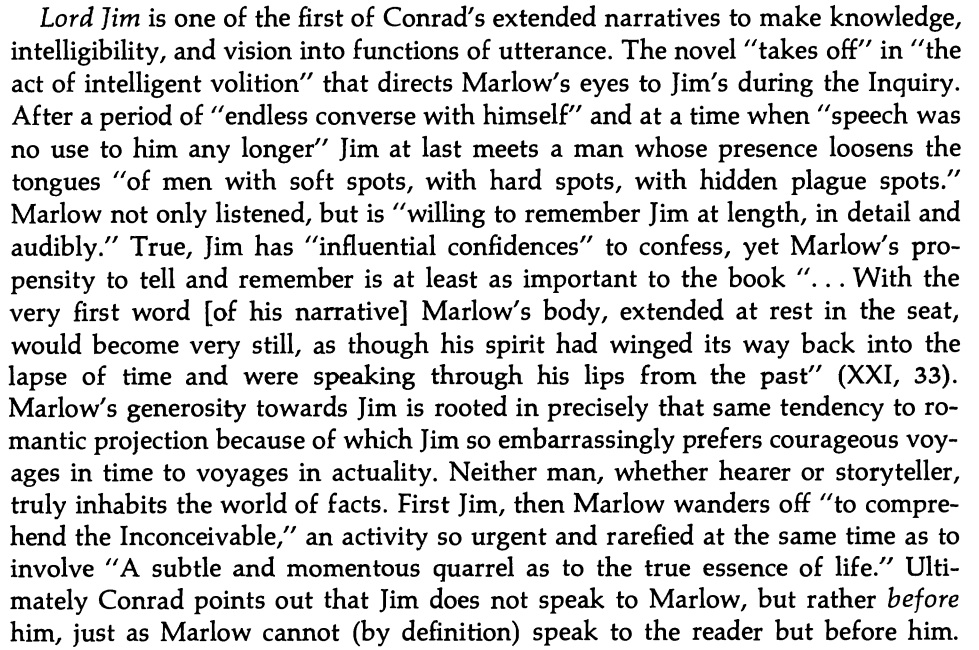 Edward Said, again, on Joseph Conrad (and Sigmund Freud)... 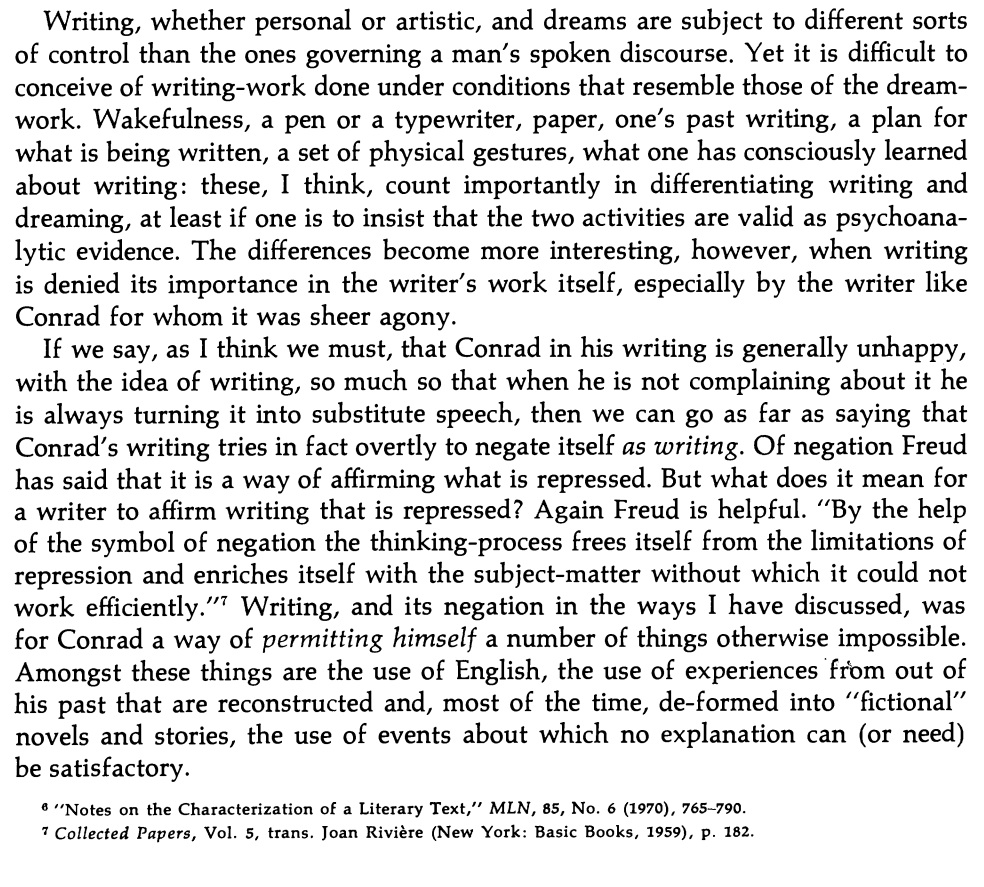 Helen Vendler on Criticism 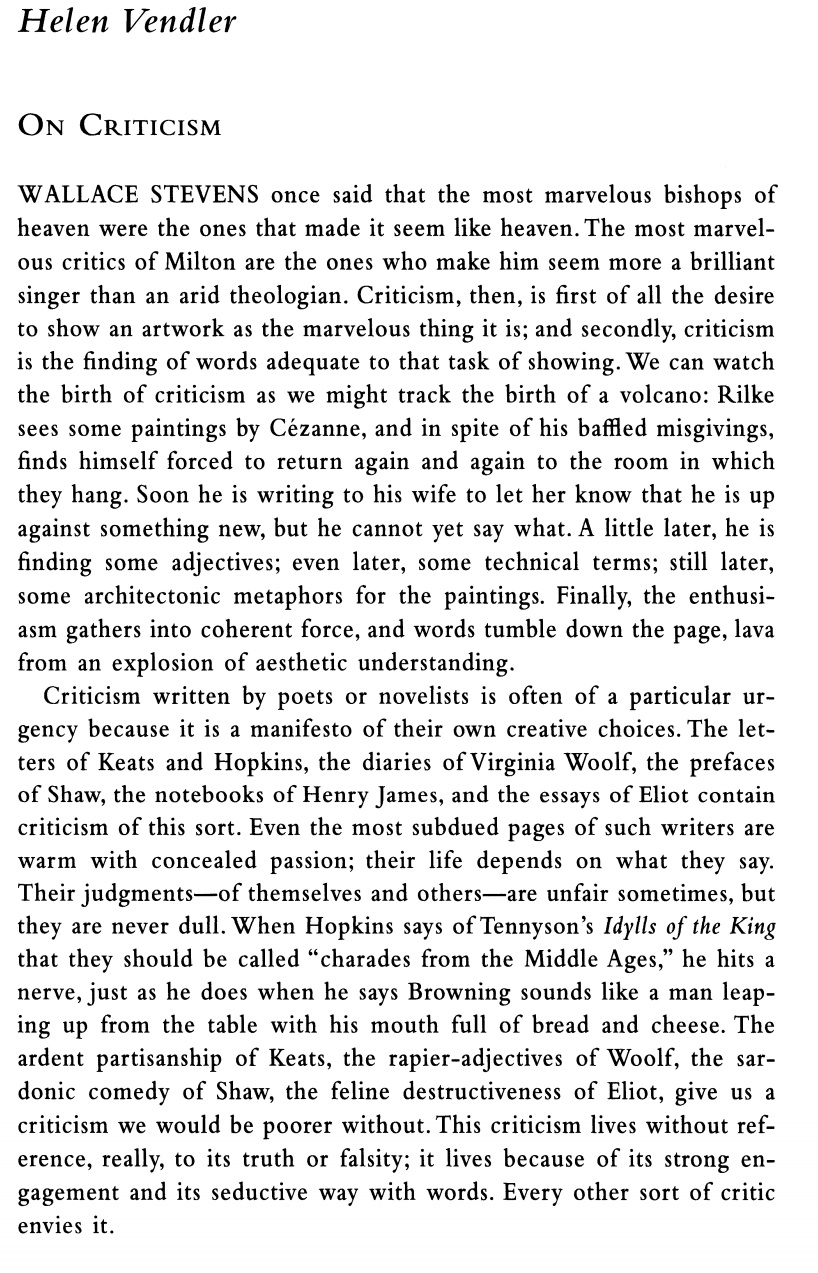 and last, J. Hoberman (extra-cool film theorist)... (click image to see/read his full review)...  |
| urgent issues? email: memo@sdsu.edu |
 Back to your Calendargasm day to day diary! |

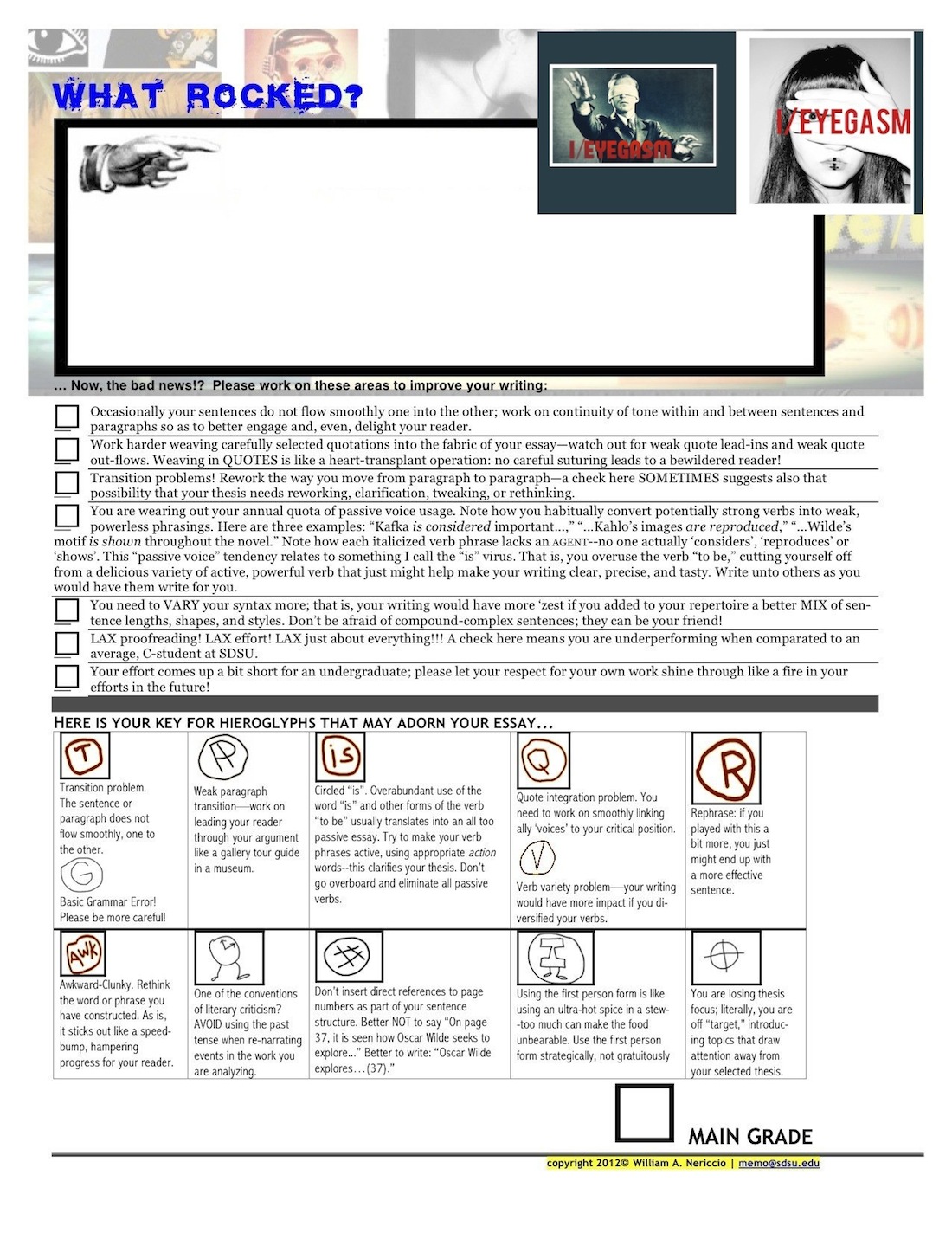
 Write unto others as you would have them write for thee!
Write unto others as you would have them write for thee!